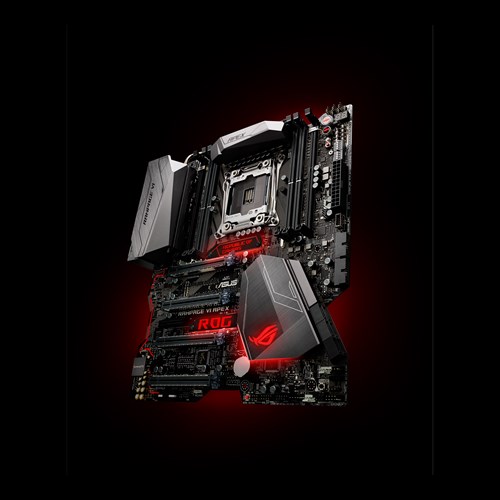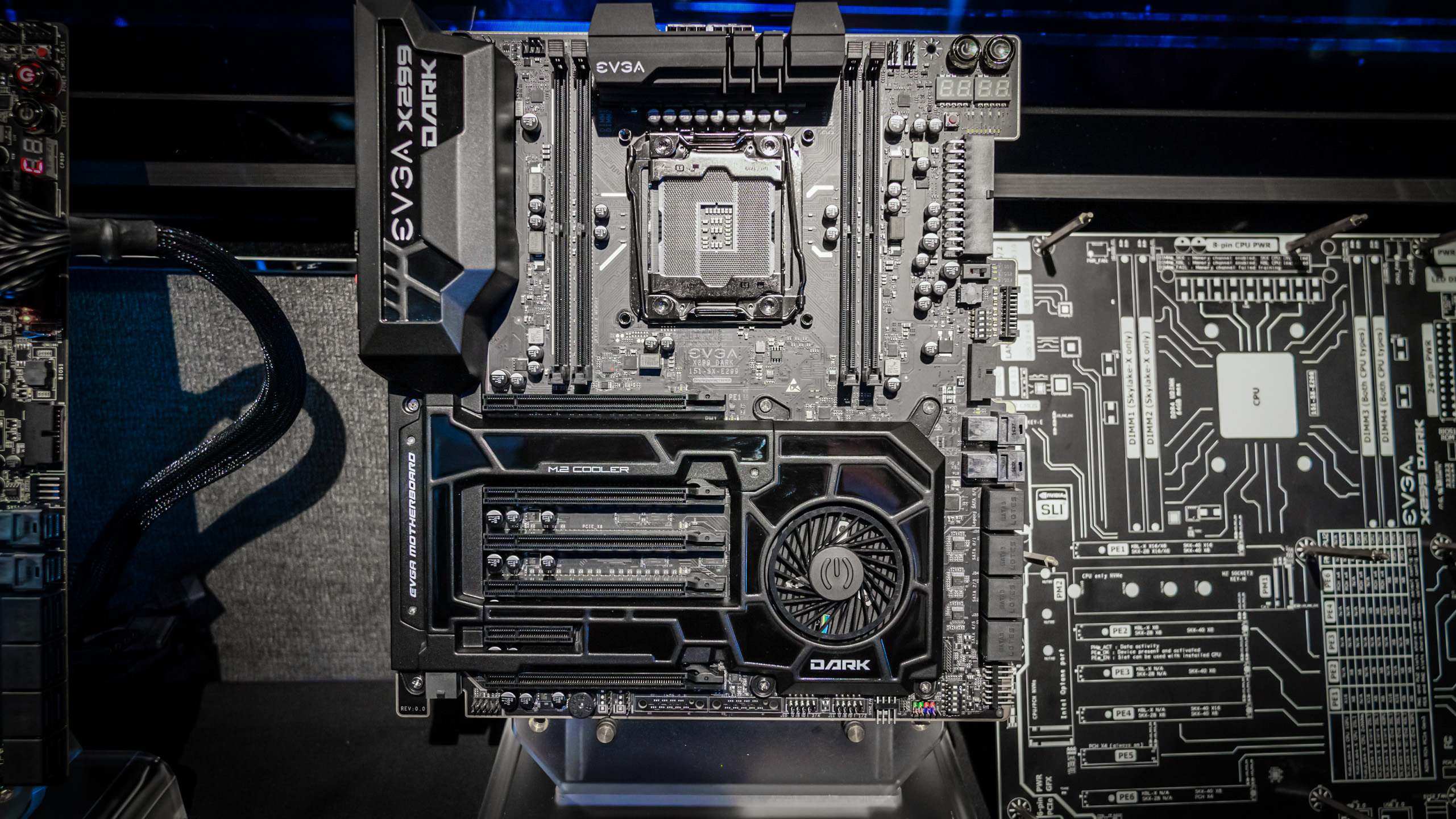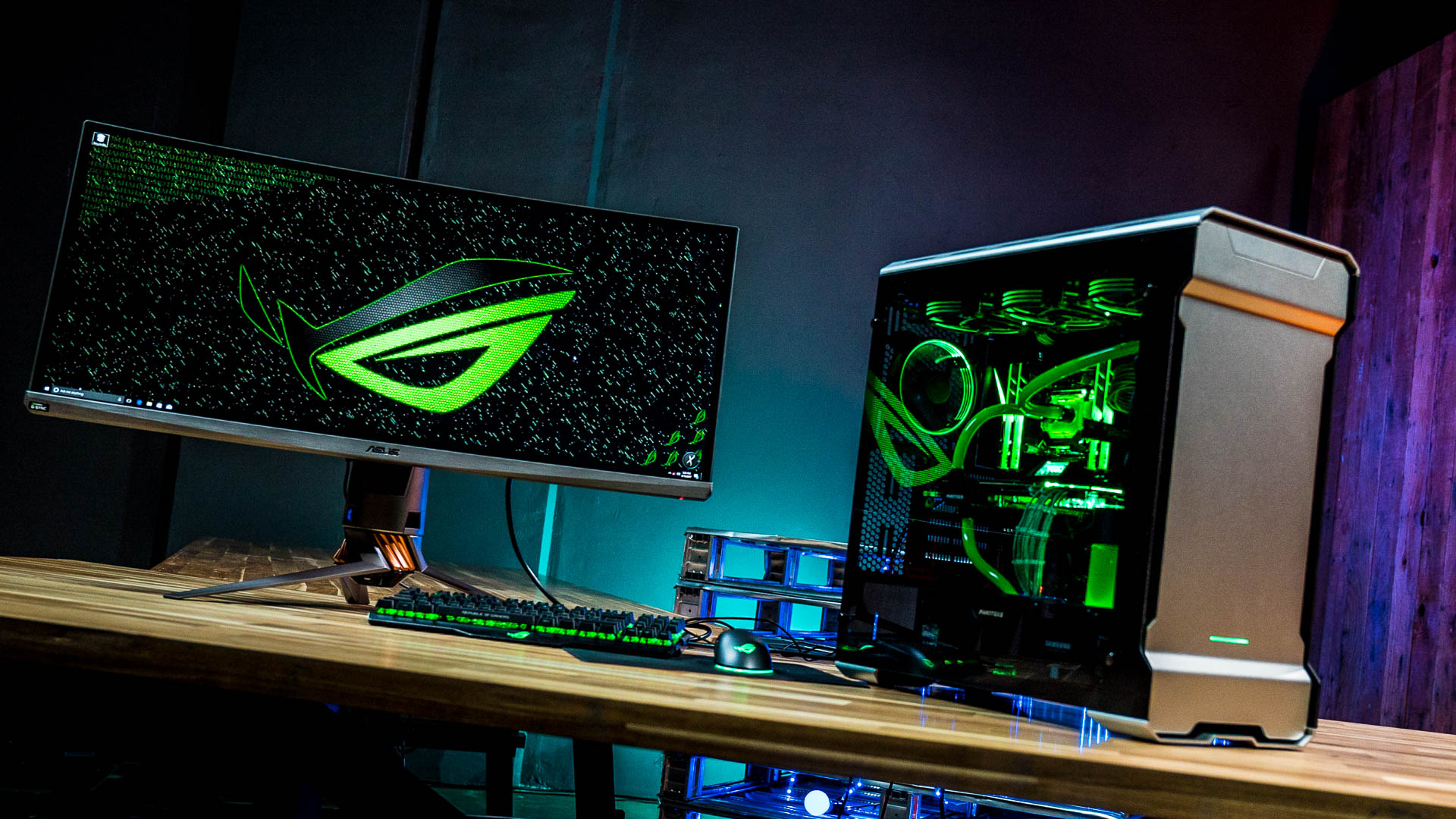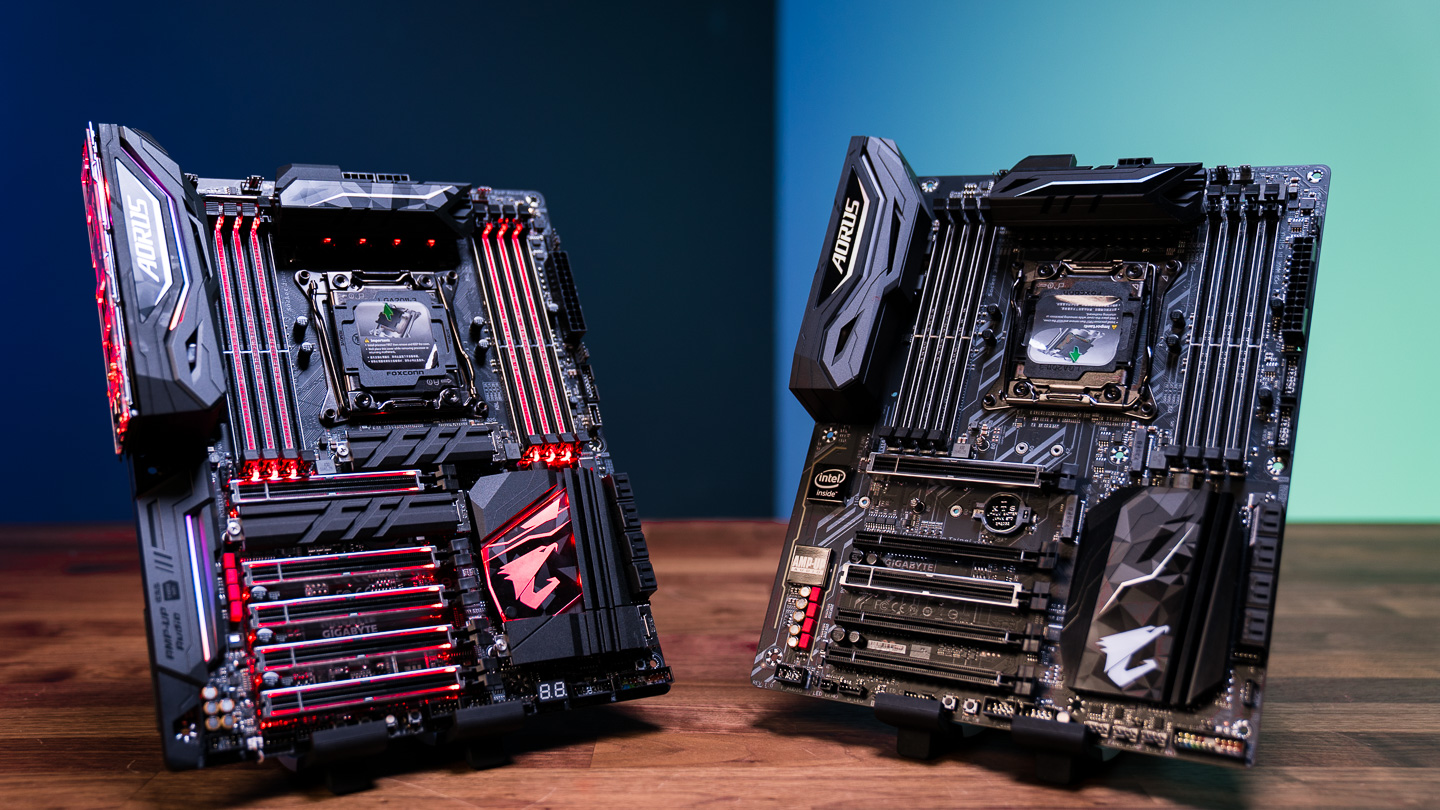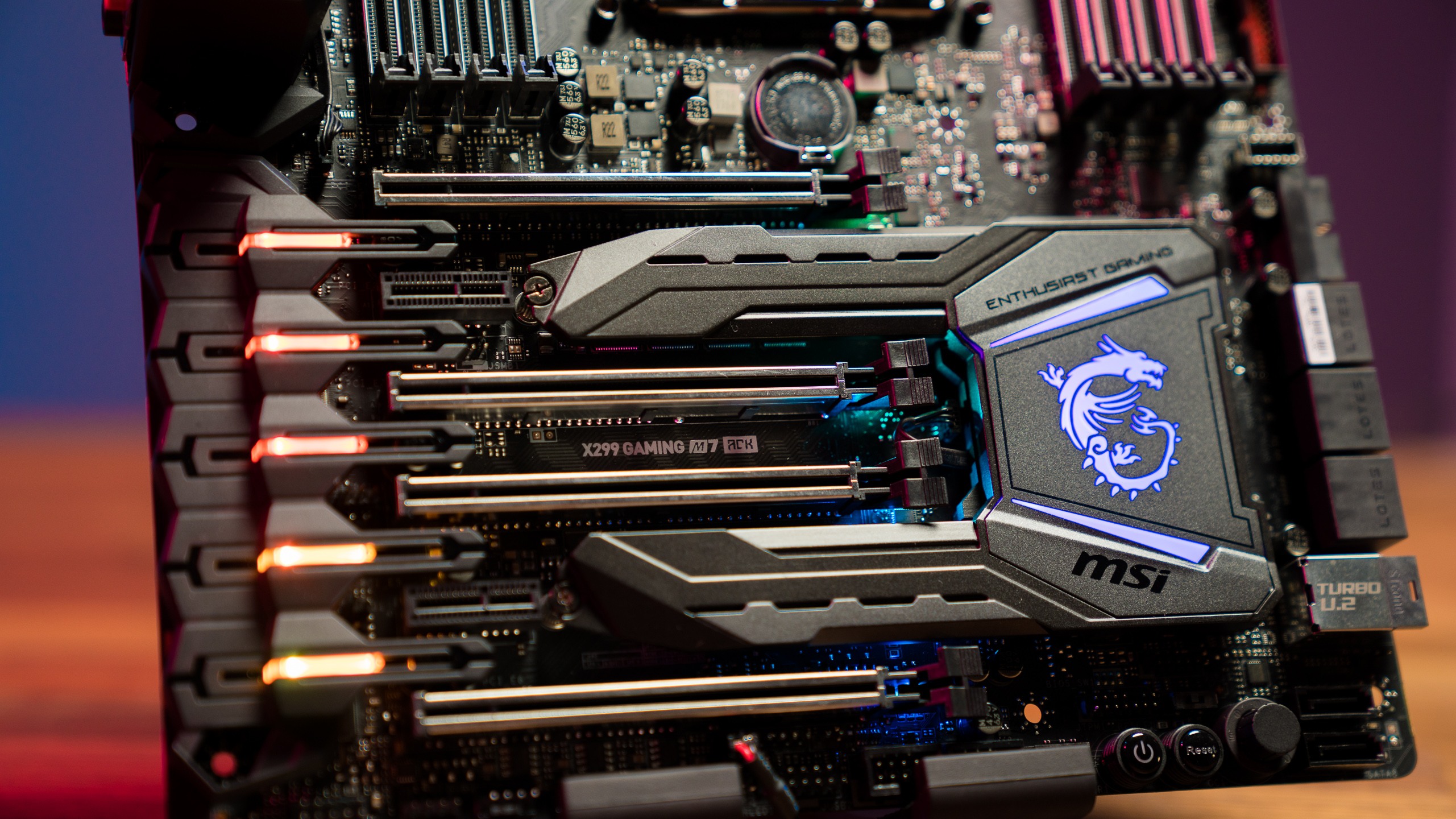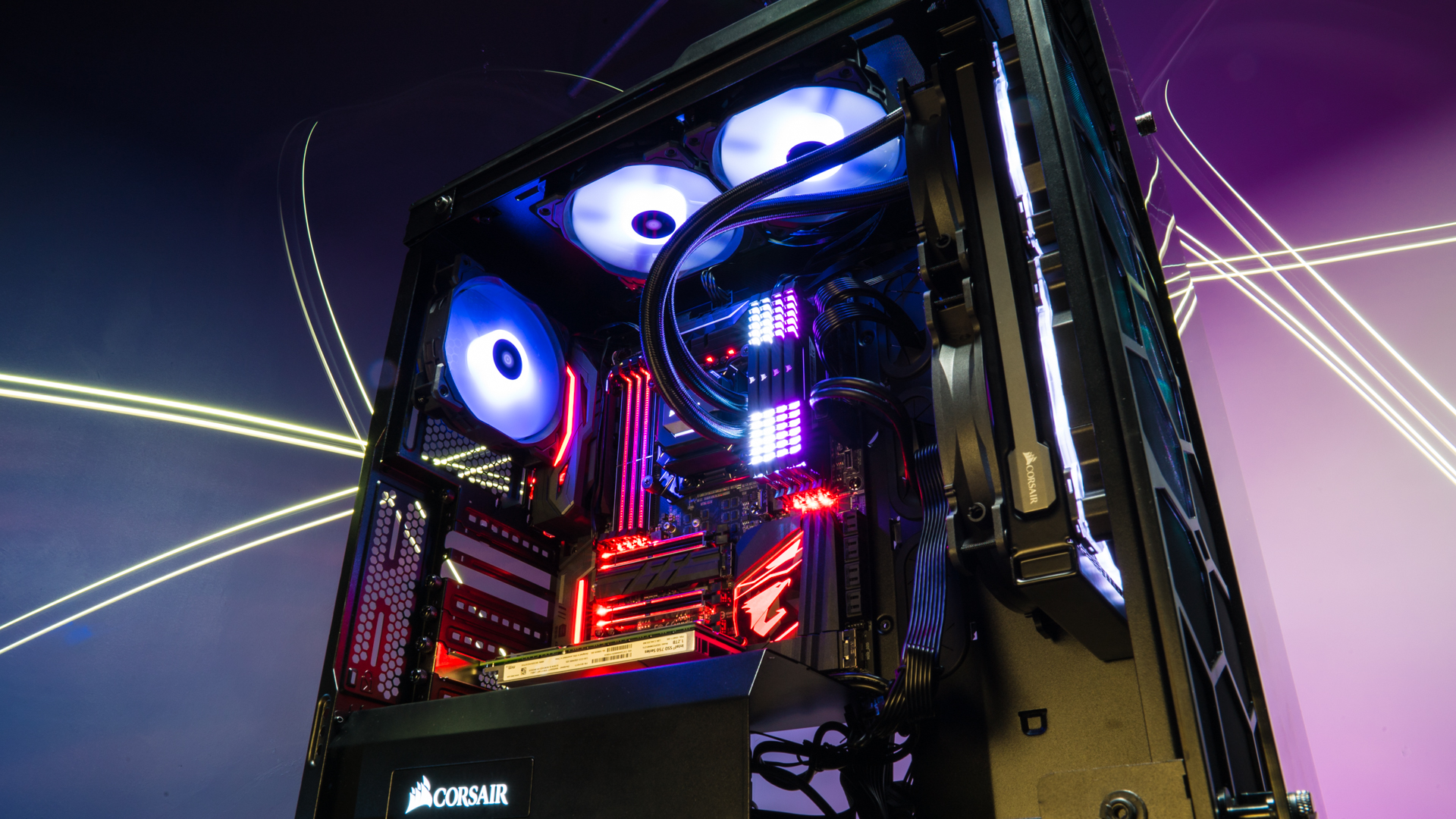
Intel X-Series is here and that means new motherboards! So if you’re new to PC building and want to get into the X, we’re here to help. Check out our explainer on Intel’s X-Series CPUs if you still have questions about this whole X-Series, i9, X299, Basin Falls, LGA2066, Kaby/Sky-X thing.
Now, we’ve had a chance to use a handful of these boards from ASUS, Aorus and MSI but this guide isn’t an exhaustive test. Rather, this is our guide to buying boards for your needs. Gaming? RGBs? Mini PCs? We got you covered.
But first, to answer the most asked question: all new Intel X-Series CPUs use X299 motherboards. Older X99 mobos won’t work with new X-Series CPUs. Likewise, older CPUs won’t work with new X299 mobos. Clear? Clear. Now let’s take a look at the most extreme PCBs to ever hit the market.
MEET THE MOTHERBOARD ALL STARS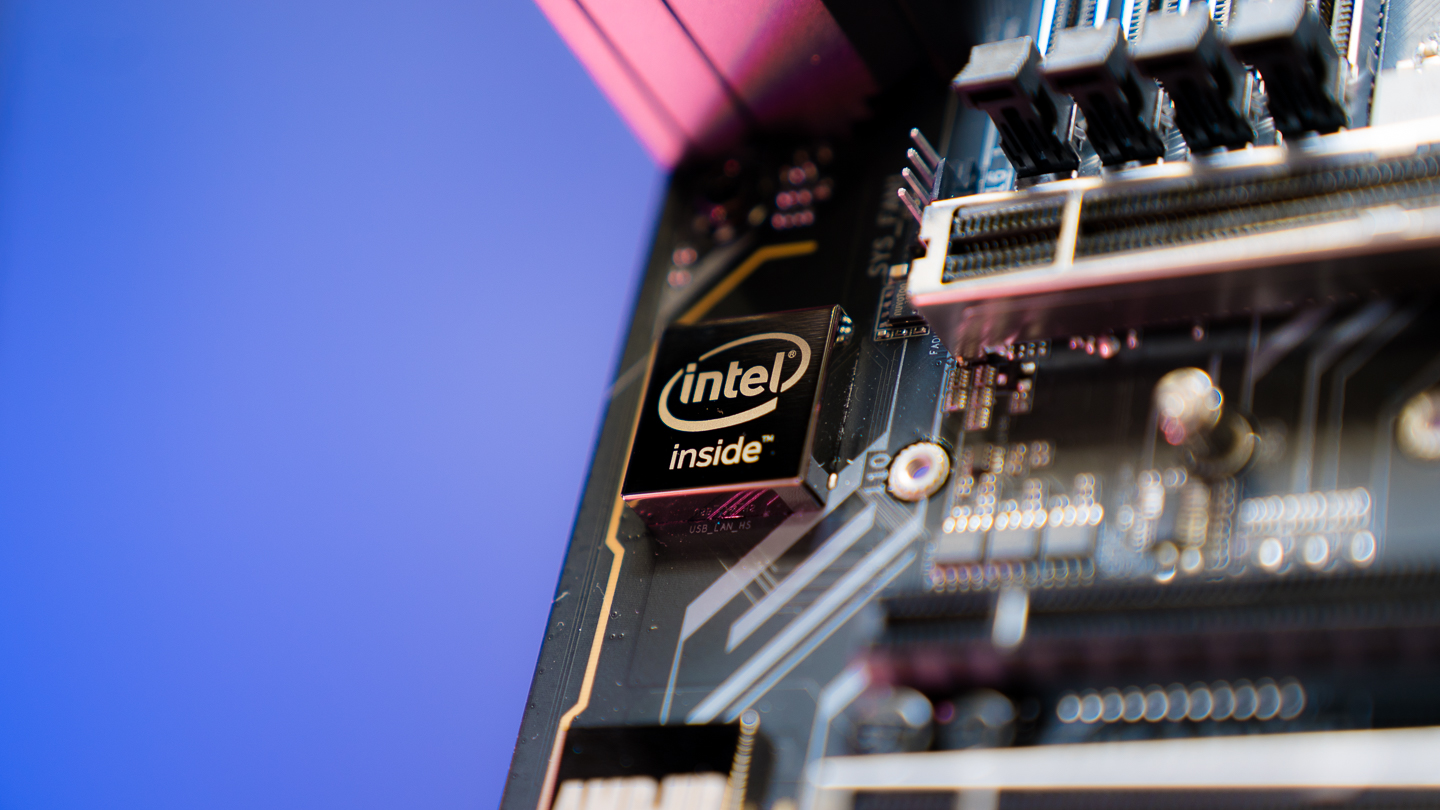
If you haven’t built a PC in a while or are switching from Mac because their cheapest “pro” device is a $5000 iMac, you’ll want a quick lesson on the main motherboard players. To be clear — these companies manufacture raw motherboards as opposed to the motherboards found inside a Dell, HP, Lenovo, etc. Typically, when buying a pre-built PC, the motherboard is bare bones. The motherboards here are packed with the latest tech. Even the cheapest boards of the X299 series are some of the most impressive motherboards to ever grace a PC.
ASUS: The largest motherboard manufacturer in the world (and a giant tech company overall), ASUS has a huge line of motherboards with unique models for different types of users. ASUS prides itself on cutting-edge hardware design as well as its software suite. Talk to anyone from ASUS and they’ll list off their “world’s first” cred. ASUS pushes serious R&D and the entire industry benefits. As for their lineup, the ROG line (Republic of Gamers) is ASUS’s top overclocking and liquid line, Strix for gaming, Deluxe for everyday users, TUF for extra durability, Workstation for professionals.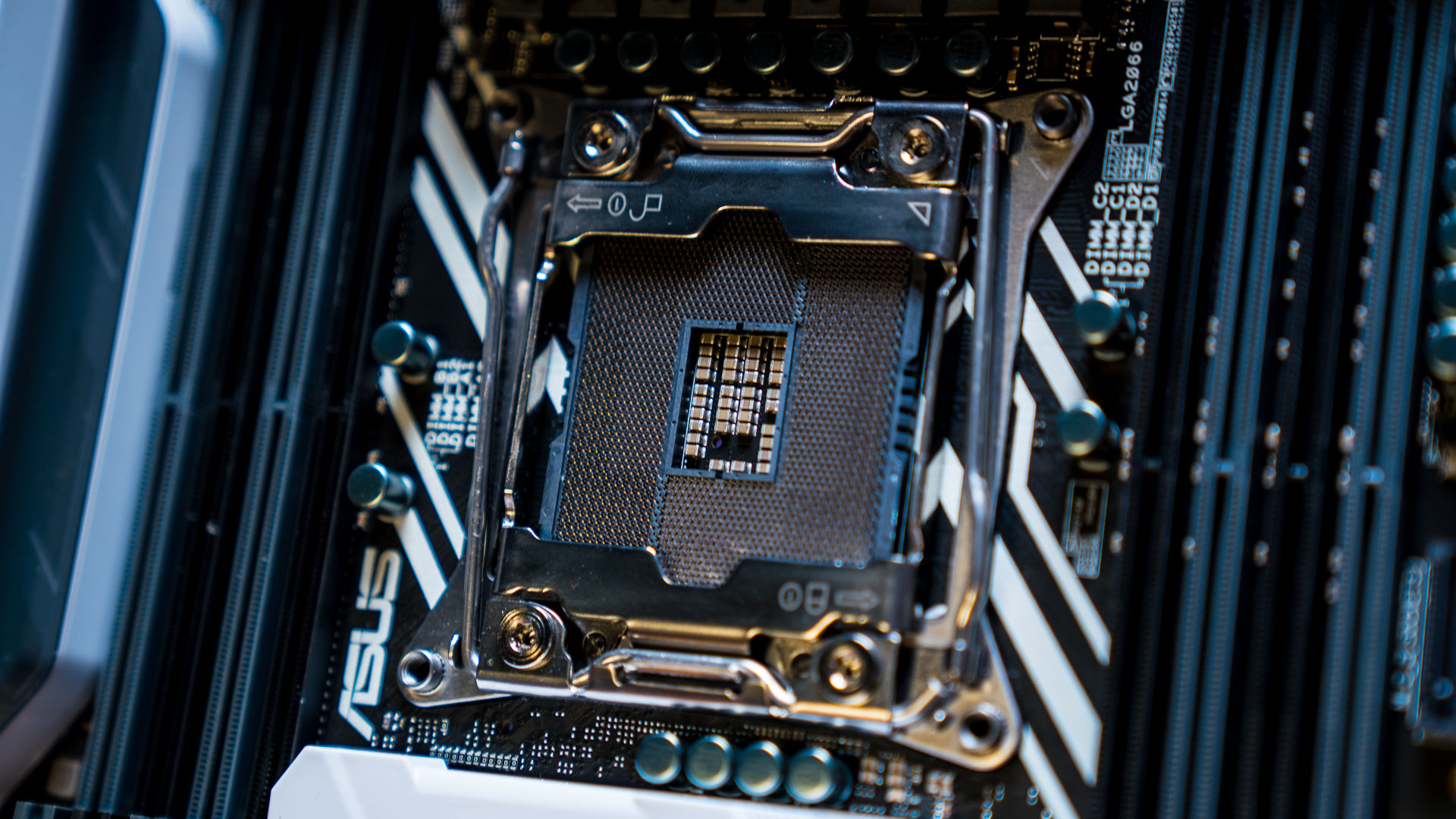
AORUS/GIGABYTE: A monster motherboard and tech company, GIGABYTE recently split their lineup between their Aorus brand which covers high end gaming and GIGABYTE which tackles everything else. GIGABYTE has great history in making boards and pushing new features and styles. Their initial launch for X299 focuses on a handful of Aorus gaming motherboards with some seriously awesome RGB and audio tech. GIGABYTE has more unique and extreme boards in the pipeline, including workstation and professional boards. Aorus/GIGABYTE also makes some seriously impressive laptops, graphics cards and other tech. There is a reason why the Aorus booth is so gigantic at shows like PAX and CES — they make great stuff.
MSI: MSI is gaming-first, so their motherboards focus on gaming performance with styling like carbon fiber, arctic white and desert camo. MSI also makes graphics cards and a huge host of other devices that complement their lineup, like their absolutely huge line of gaming laptops.
ASROCK: ASRock is a smaller company that focuses on performance motherboards. Unlike ASUS, GIGABYTE, MSI and EVGA, ASRock is the only big motherboard manufacturer that doesn’t make graphics cards, laptops and accessories. For X299, ASRock Taichi line focuses on general purpose while the Fatal1ty line is all about gaming. Interestingly, ASRock is the only company with an X299 ITX motherboard, just like they were the only company with an X99 ITX motherboard. ASRock also makes funky boards like a Bitcoin exclusive.
EVGA: A big player in the graphics card and power supply game, EVGA’s motherboard offerings are typically a lot smaller than the others. EVGA, being a gaming performance company, focuses on overclocking and performance options. EVGA is also launching with an mATX board, unlike most everyone else. EVGA has recently gotten into the PC case and laptop market, flushing out their portfolio of pure black components.
BIOSTAR: Similar to ASRock, Biostar focuses on motherboards but also sells SSDs, mice and mini PCs. Biostar, while providing a few unique products like a bitcoin mining motherboard, typically focuses on budget boards. For X299, Biostar has announced one Racing board geared towards gaming but with 7 PCIe X16 slots.
SUPERMICRO: Finally, Supermicro is a big server manufacturer that typically focuses on Xeon products with green PCBs and business features. For X299, Supermicro is bringing some of their server tech to the X299 platform while upping their aesthetic game to go after the picky gaming audience.
X299 FOR EXTREME GAMING AND CREATING
Previously, X99 had a strong slant towards the content creators. After all, if you were looking at the $1799 10 core CPU, chances are you were editing vids, rendering 3D or deep in CAD. 10 cores was overkill for gaming.
Now, the X-Series CPUs span from $249 to $1999, with four to 18 cores. That means there’s a CPU for every performance customer.
X-SERIES VS CONSUMER BOARDS
Moving up to X-Series means eight RAM slots for 128 gigs of DDR4 RAM (or 512GB of server ECC RAM on certain boards) versus the four RAM slots with up to 64GB RAM. Now, some X-Series chips don’t support all the RAM slots (the two Kaby-X chips), but overall, X-Series means more hardware options, including up to 44 PCIe lanes for plugging in lots of graphics cards, storage and other professional configurations.
For gamers or overall high end users, X-Series is just more professional. The minimum spec board needs to meet the needs of an overclockable $249 CPU compared to a sub $50 CPU of the consumer line.
EVERYTHING IS OVERCLOCKABLE
The first thing to know about the X-Series motherboard lineup compared to the Z270 chipset (the consumer lineup) is overclocking — everything is overclockable. Meaning, with X299, you won’t see boards like B250 or H250 variants like you do under Z270. The H and B boards don’t support overclocking or all the features found on the Z line of boards.
X299 PRICES
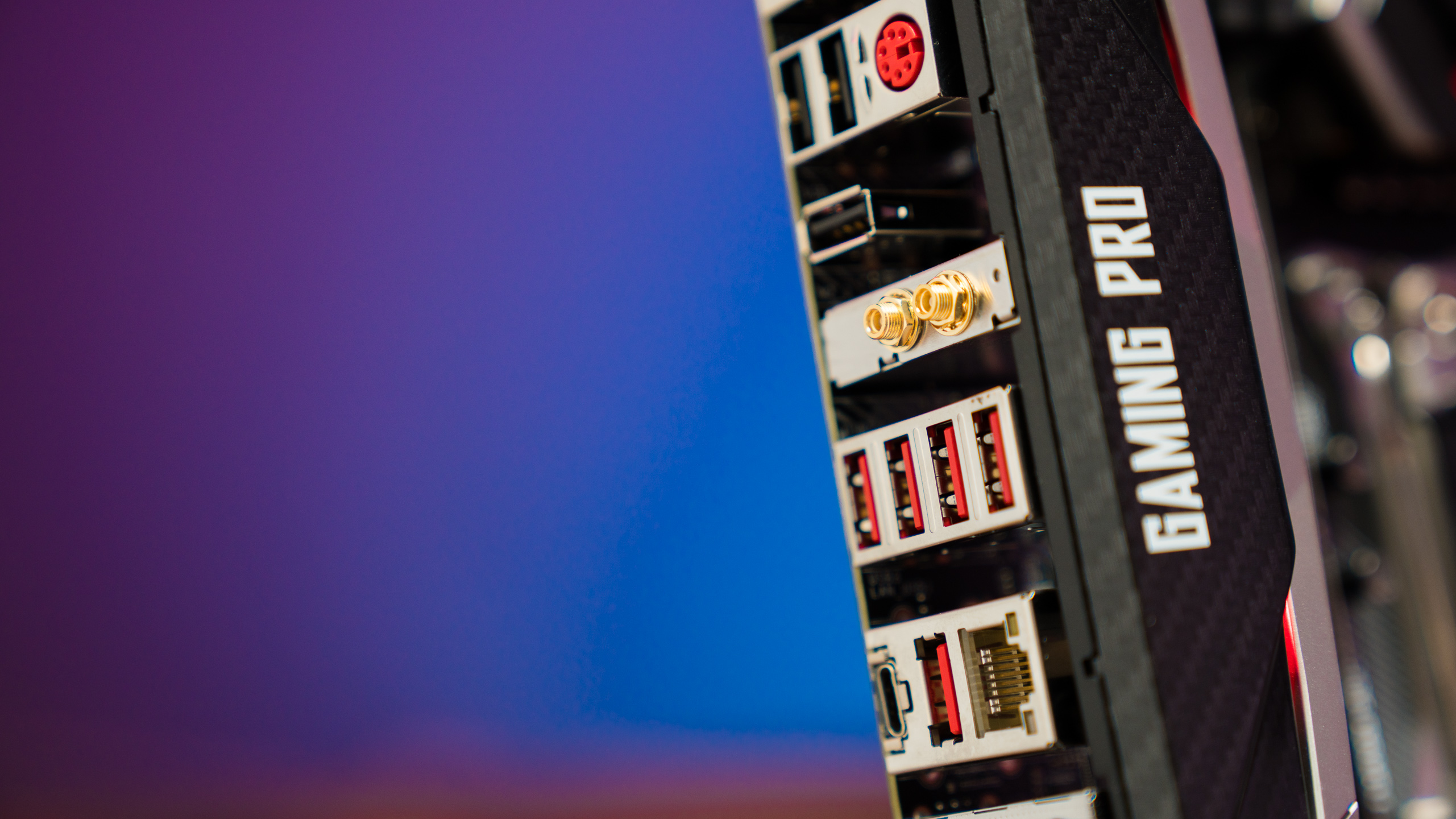 The lowest priced X299 motherboards right now are from ASRock at $229 and $249. Lowest from MSI is $259, while ASUS comes in at $259 and Aorus at $279 with their Newegg exclusive Gaming 3.
The lowest priced X299 motherboards right now are from ASRock at $229 and $249. Lowest from MSI is $259, while ASUS comes in at $259 and Aorus at $279 with their Newegg exclusive Gaming 3.
This is quite a bit higher than Z270 which starts around $110 for a full ATX board.
For apples to apples comparisons, the ASUS Strix Z270-E MSRP is $199, while the Strix X299-E is $349. That said, the X299 Strix does offer some features over the Z270 version: M.2 SSD heat sink, higher speed RAM support, new double LED addressable headers, Q-Code, Q-LED and a LED ROG logo. Does that justify the $149 premium? Probably not, but there is additional cost of the upgraded X299 platform.
On the other end of the spectrum, the Aorus Gaming 9 Z270 is $499 while the X299 version is also $499. So the same.
The reasons the motherboards are inherently more expensive is due to the extra Extreme features — eight RAM slots (rather than four), up to 44 PCIe lanes (rather than 16), support for 165w CPUs (rather than 91w) and a host of other big boy features for X-Series CPUs.
So, ultimately, X299 motherboards are naturally more expensive though we will see lower-priced boards as manufacturers, just not immediately.
THE BEST GAMING X299 MOTHERBOARD?
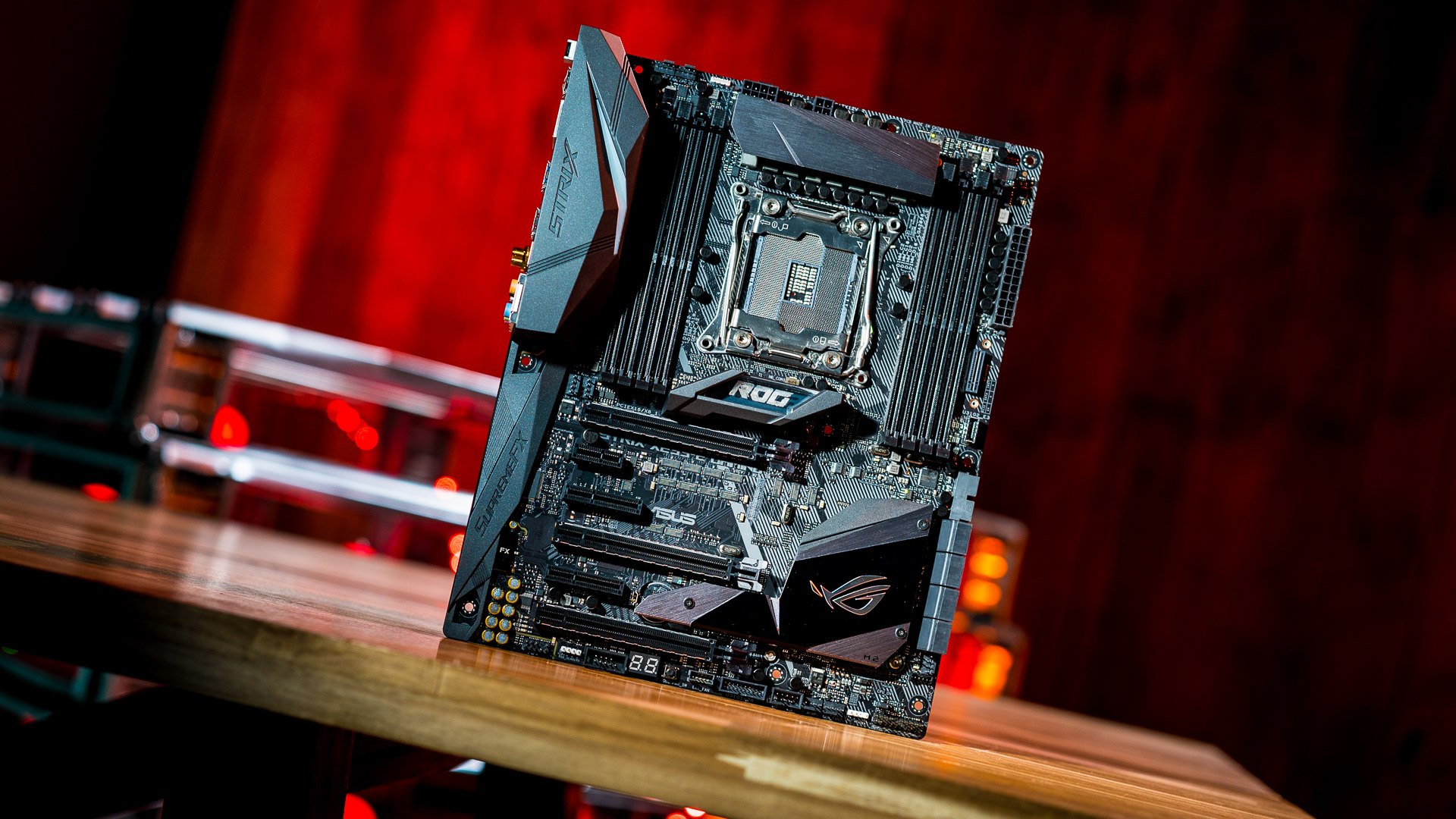 No doubt everyone will have their opinion and, of course, every motherboard manufacturer says their boards are the “Ultimate Gaming Experience!” But what is ultimate gaming? And are we talking FPS, RTS, MOBA, etc?
No doubt everyone will have their opinion and, of course, every motherboard manufacturer says their boards are the “Ultimate Gaming Experience!” But what is ultimate gaming? And are we talking FPS, RTS, MOBA, etc?
The truth is a great gaming experience doesn’t need a $1999 18 core CPU and $499 motherboard to match. Realistically, these boards are a bit overkill for gaming.
That said, the i7-7740X is arguably the best gaming CPU in the world — the 7740X replaces the 7700X as the top 4 core, 8 thread CPU. And I’ve already built two 7740X gaming rigs, so there is a really compelling reason to go with 7740X: the biggest single core overclocks are to be had on 7740X and X299.
But, to be realistic, most of these details (overclocking and PCIe lanes) are universal across all X299 motherboards.
So what is a good gaming board? The most popular will probably be the ASUS Strix X299. Strix puts a focus on three areas: top internet connectivity (Killer AC, MU-MIMO), one-click overclocking/fan control, and, most importantly, software. ASUS really spends serious time tweaking the software. It’s hard to overstate how good the latest Auto-Tuning and FanXpert works – you click the button and ASUS calibrates your whole rig.
Now, there are special scenarios. For competitive esports players, you can benefit from having dual LAN and bandwidth management found on boards like the ASUS ROG, Deluxe and TUF boards, Aorus Gaming 7 and 9, MSI X299 M7 and ASRock’s high end boards.
Also, even fancier software is really where the motherboard manufacturers are duking it out. ASUS has their Sonic Radar that, while cool, isn’t a true unfair advantage (it shows you a 3D map of noises in the game). Others come bundled with software like XSplit and a variety of streaming and audio EQ software with unique functions.
Personally, the idea of a “gaming” motherboard is a big misleading. Our advice is to find the features that matter to you (reliability, wifi, etc.) and find the best board to match.
But the most important thing to remember: the more RGBs in your PC, the more likely you’ll get drafted into an esports team.
BEST ALL-AROUND X299 MOTHERBOARDS
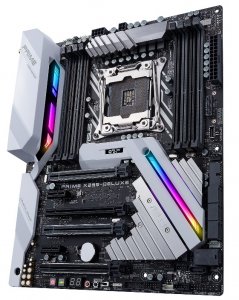 We get this question all the time – “What’s the best board for everything? I game a little, work a little, but I want something really good.” Don’t we all. While “best” is relative, with X299, the best all-around motherboards are going to be ones that don’t sacrifice some features to pursue ultra-overclocking, extreme gaming, ultra-durability, etc.
We get this question all the time – “What’s the best board for everything? I game a little, work a little, but I want something really good.” Don’t we all. While “best” is relative, with X299, the best all-around motherboards are going to be ones that don’t sacrifice some features to pursue ultra-overclocking, extreme gaming, ultra-durability, etc.
Arguably the most popular board out there is the ASUS -A (pronounced “Dash Ayy”) series seen across many chipsets. Here, the Prime X299-A comes in at $309 and includes the simple 5-way Optimization aka easy overclocking, DDR4 up to 4133MHz speeds, M.2 heatsink and ASUS’s all around excellent construction. ASUS has made a name for themselves with their software and the Prime X299-A is ASUS’s everyman’s board. The downside is no wifi included like the higher-end boards.
On the higher end, the ASUS Prime X299 Deluxe is a professional favorite. And a personal favorite. I mean, that tiny OLED debugging screen is kinda awesome. The Deluxe has it all except the liquid-specific features on the ROG series.
As for other brands, there really isn’t much in the market yet — GIGABYTE will come out with general purpose boards, though Arous gaming is their focus right now. MSI is 100% gaming, EVGA is all about overclocking. Really, only ASRock’s Taichi brand is going for the non-gaming general purpose market.
BEST RGB MOTHERBOARD
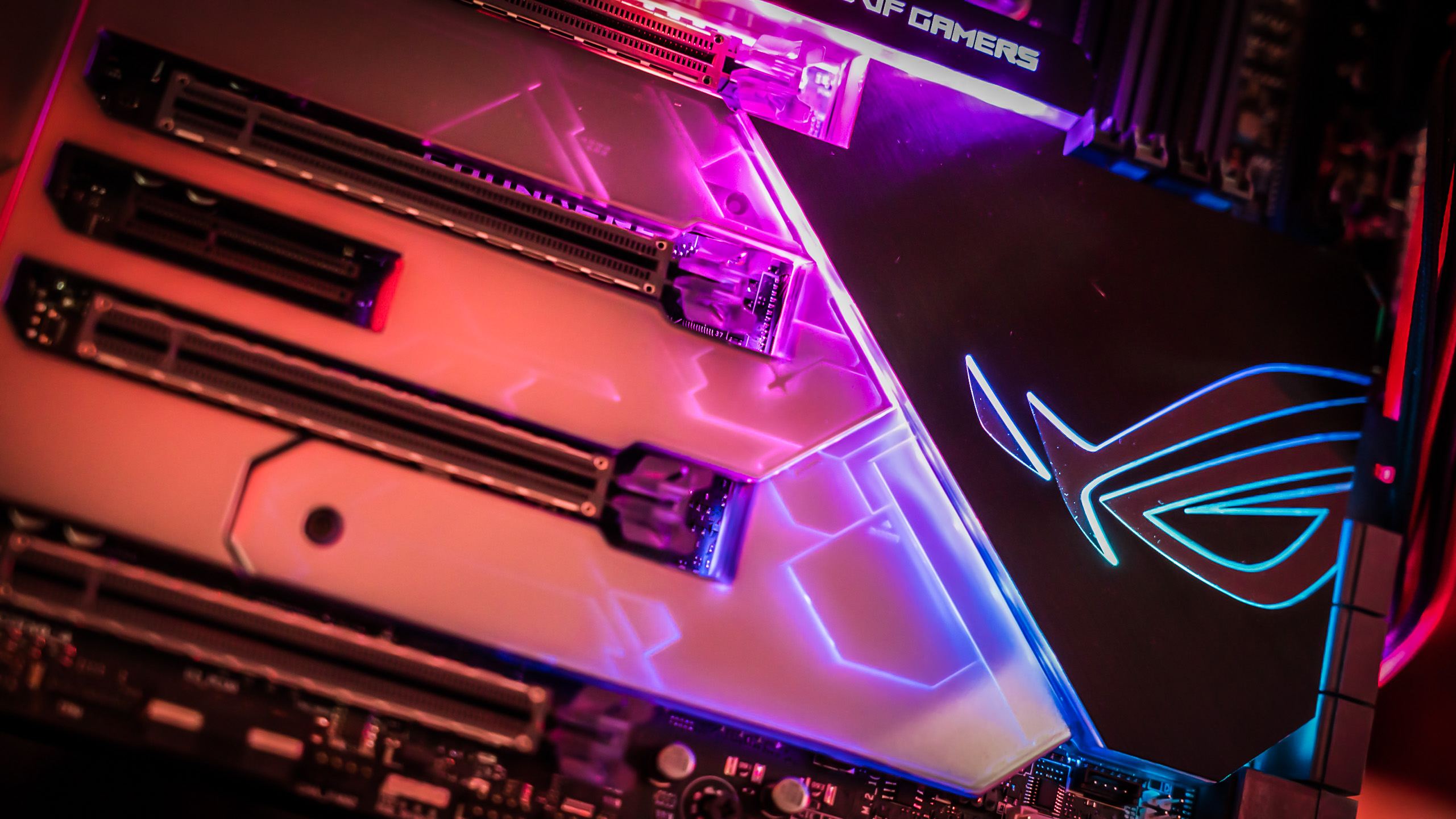 While not everyone is into the RGB fad, every motherboard manufacturer is pushing the unicorn action big time. And, remember, you don’t have to use all 16.8 million colors.
While not everyone is into the RGB fad, every motherboard manufacturer is pushing the unicorn action big time. And, remember, you don’t have to use all 16.8 million colors.
Unlike other categories, there are clear champions — best RGB boards are from Aorus and ASUS.
Aorus brought RGBW to the RGB header scene. That means the Aorus boards are able to use LED strips with not just RGB LEDs, but also dedicated White or UV leds in the same strips. This allows for some really attractive designs — the pure white LED looks way better than the white made from RGB on a typical LED.
Moreover, both Aorus and ASUS debuted individually addressable LED headers (seen above). This means you can control LEDs similar to how the NZXT Hue+ or RGB keyboards work. Right now, the tech is new so the software hasn’t caught up, but we’ll be seeing many new programs similar to the maker-scene using Arduinos to program really funky lighting effects.
Aorus also wins the motherboard light effects — after all, they have light up IO shields, PCIe lanes, RAM slots and detachable acrylic inserts that can be etched with custom logos. Next: whole freakin’ PCB will light up.
That said, ASUS created the RGB header scene with their Z170 Assembly board, starting a war between the mobo companies and accessory manufacturers like Corsair, NZXT and Thermaltake. Who will win? You, the customer, you win.
BEST EXTREME OVERCLOCKING X299 MOTHERBOARD
Everyone will claim best overclocking performance, but there are two boards specifically designed for overclocking — the ASUS X299 Apex and the EVGA X299 Dark. Neither board is available at launch, but they’re worth discussing.
The ASUS X299 is part of the ROG lineup, so top stuff. But like the Z270 version, the X299 model ditches RAM slots to make room on the mobo for more overclocking power functionality. This means double 8 pin power connectors in addition to the 24 pin, not just the single or a 8+4 or 8+6 seen other boards.
EVGA takes a similar approach and cuts out half the DIMMs and adds in a “robust” VRM for “clean power” to the CPU. Interestingly, both boards use custom PCBs in funky shapes.
In the wings is the GIGABYTE X299-SOC. While not a launch board, the SOC is typically GIGABYTE’s top overclocking beast. At Computex 2017, GIGABYTE blew through $20k of liquid helium to hit 7.5GHz.
Of course, the ASUS X299 Apex has already set a bunch of world records in overclocking, taking the four core i7-7740X all the way to 7.56GHz. On a stock Intel cooler! Yeah, no, on liquid helium. But, ya know, world records and all that, both by Der8auer, famed overclocker and helium huffer.
BEST AUDIO
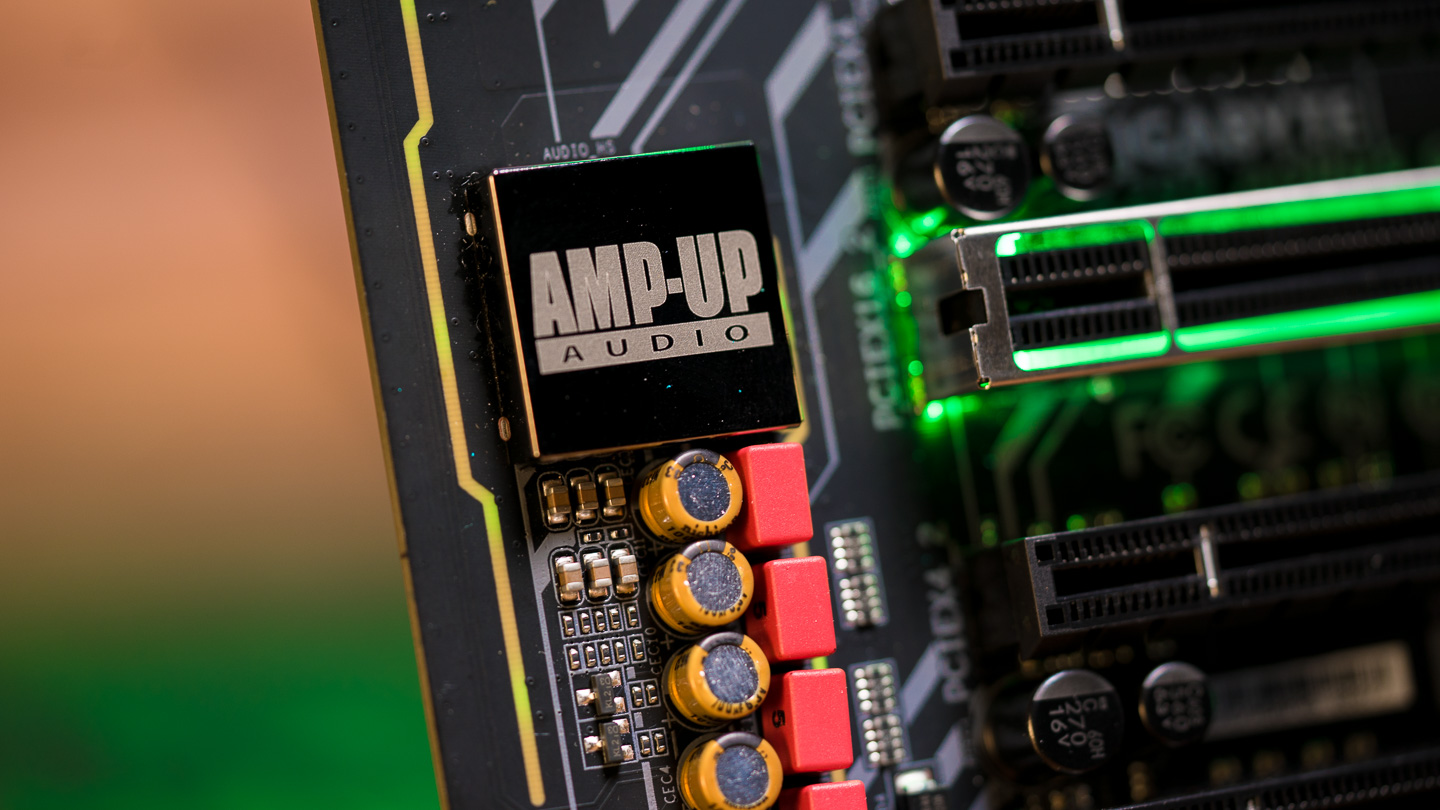 Yes, audio has become seriously legit on Intel motherboards. While motherboard marketing is all kinds of hype, there have been real advances in audio on the motherboard itself.
Yes, audio has become seriously legit on Intel motherboards. While motherboard marketing is all kinds of hype, there have been real advances in audio on the motherboard itself.
First, ASUS makes high end sound cards, audiophile amplifiers, DACs and components outside of their PC products. So it’s not a surprise that ASUS brings that knowledge to mobos.
ASUS also includes amps for both the front and back audio jacks. This isn’t typically done, mind you. In fact, when you read about “Fancy Audio” on a mobo, it only applies to the audio header which connects to the PC case, not the back of the motherboard.
Of course, no one tells you not to plug your headphones into the back of the PC. So ASUS is including audio amps on the front and back.
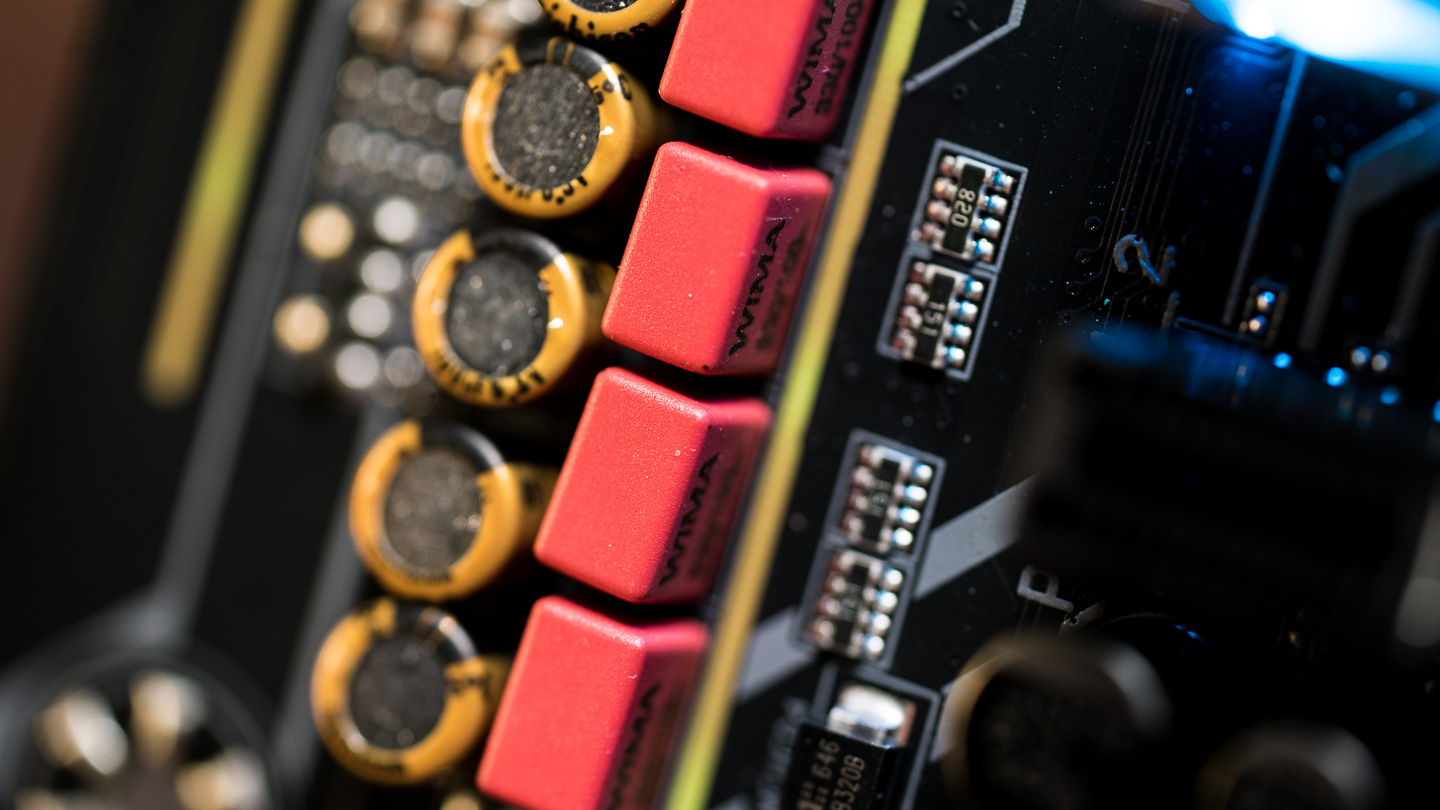 ASUS’s SupremeFX is the audio solution on Strix, while the other boards get Realtek. The Prime boards add Crystal Sound 3 on top of that, which includes shielding, pop filters, and just a better audio platform. No ESS Sabre DACs on ASUS motherboards this generation.
ASUS’s SupremeFX is the audio solution on Strix, while the other boards get Realtek. The Prime boards add Crystal Sound 3 on top of that, which includes shielding, pop filters, and just a better audio platform. No ESS Sabre DACs on ASUS motherboards this generation.
Not to be outdone, Aorus massively stepped up their hi-fi game. MASSIVELY, I tell you. We’re talking audiophile ESS Sabre DACs, which headphone junkies will recognize, as well as quad Burr-Brown OP amps, another audiophile brand. Finally, WIMA audiophile capacitors (first seen on an ASUS board) are making an appearance across all Aorus boards. These are not BS parts — Aorus went with legit brands that cost a pretty penny. So seeing these three components on a motherboard will make audiophiles happy.
Now, both ASUS and Aorus are providing impedance-matching headphone tech. Meaning, plug in a high ohm fancy headphone (ya know, the big ones) and it’ll adjust the internal impedance to provide enough amplification to really power those drivers. Plug in low impedance earbuds, it’ll dial back the power.
As for how all this tech sounds in the real world, well, we’ll have to reserve judgement — specs aren’t everything, implementation has a lot to do with audio. Regardless, if you’re into quality music, Aorus and ASUS are clearly the winners.
BEST MOTHERBOARD FOR WATER COOLING
Considering the cheapest board is $229, one expects pump headers for your AIO units to be found on every motherboard.
The real question is open loop. Again, ASUS and Aorus are in an all out war.
While final specs for the ASUS ROG Extreme have yet to be released, the early info says the Extreme board has dual flow headers to monitor double liquid loops. Also, ASUS is advertising a special header that lets custom 3rd party waterblocks monitor flow, temps and leakage. Yes, the board will shut down if a drop is detected before your entire system fries.
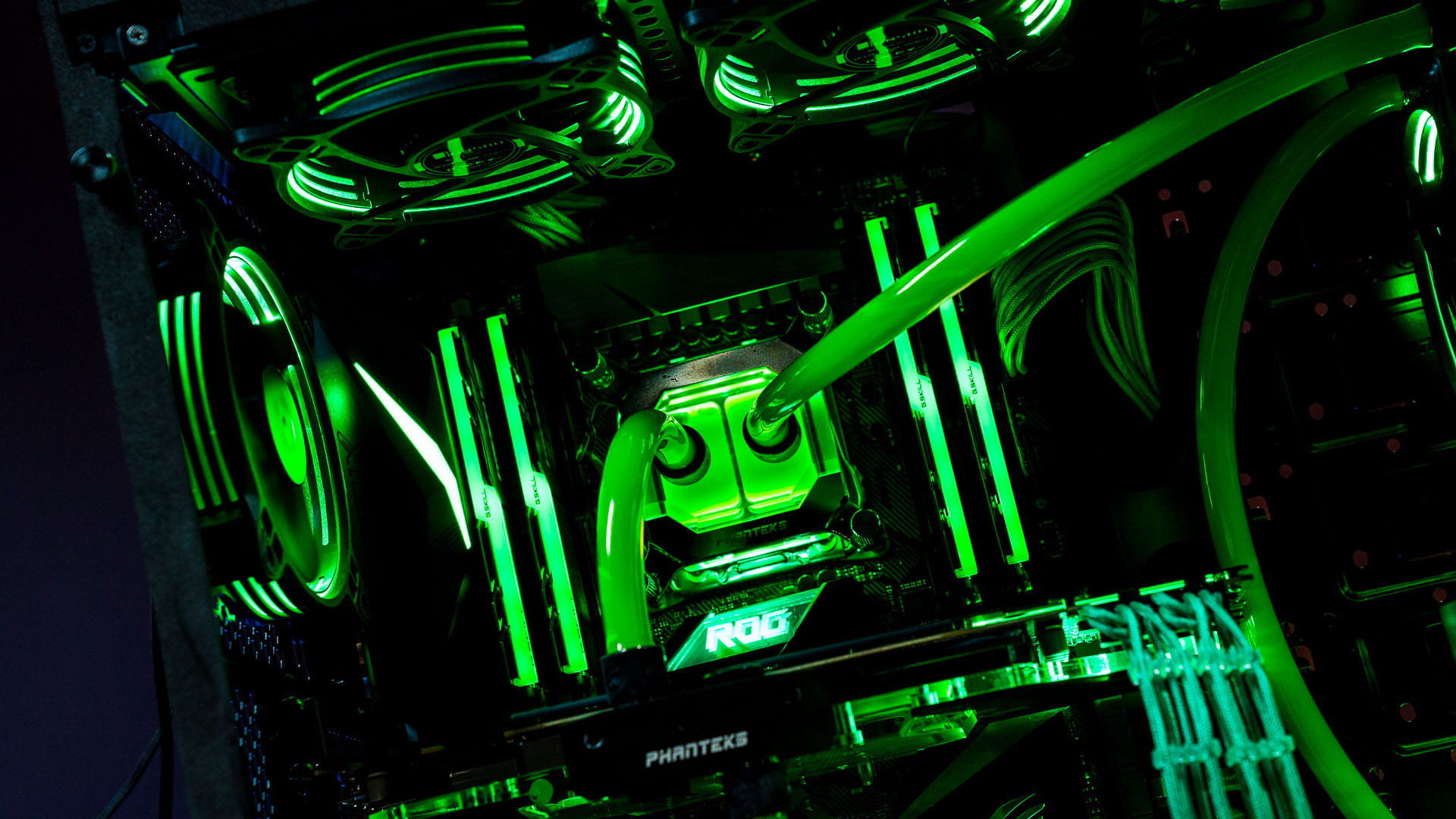 The Aorus Gaming 9 doesn’t have the full feature set as the ASUS Extreme, but it is pushing nine individual temp sensors in addition to double two pin temp/pump sensors for monitoring flow and eight normal 4 pin fan headers for both PWM and DC fans/pumps.
The Aorus Gaming 9 doesn’t have the full feature set as the ASUS Extreme, but it is pushing nine individual temp sensors in addition to double two pin temp/pump sensors for monitoring flow and eight normal 4 pin fan headers for both PWM and DC fans/pumps.
BEST VIDEO EDITING X299 MOTHERBOARD
The best motherboards for video editing will be one that just works. And maybe has 10G networking to connect to your networking closet. Right now, ASUS Rampage VI Extreme has a 10G port as well as the ASRock Fatal1ty with a 10G Aquatina (aka fancy branding) port.
Also, reliability matters, so the real pro fans out there are probably going to wait for the Workstation models rather than the gaming boards. Workstation should have longer warranties with 10G and features that matter more to business users over RGBs.
BEST M.2 SSD HEATSINKS AND PLACEMENT
M.2 heatsinks? Placement? Didn’t know this was a thing, did you? MSI started the trend with their heat shields on Z270 way back in Jan 2017. Those early models were called “heat shields” and acted more like a little SSD house than a true heatsink.
This time around, EVERYONE has M.2 heatsinks. A heatsink is a big ol’ slab of metal that dissipates heat on an M.2 drive. Does it matter? Yes. Do you need it? If you’re using a Samsung 950/960 or pretty much any NVMe SSD (the expensive ones), you’ll see thermal throttling. Meaning, performance takes a dive once you start watching GIFs. Intel’s 750 NVM SSDs aren’t even available in M.2 form, only in a larger PCIe heatsink model.
So who has the best heatsinks? Aorus, again, really stepped it up with custom machined heatsinks made of slabs of aluminum. They even sourced black full-length thermal pads rather than the weird tan or mint green of other heatsinks.
ASUS would argue that their solution is better — combining the M.2 heatsink with the chipset cover for even more thermal dissipation. Makes sense, but only one M.2 gets the heatsink, the second M.2 on almost all ASUS boards goes in the funky ASUS vertical slot. After all, getting some vertical air action is one of the best ways to cool components.
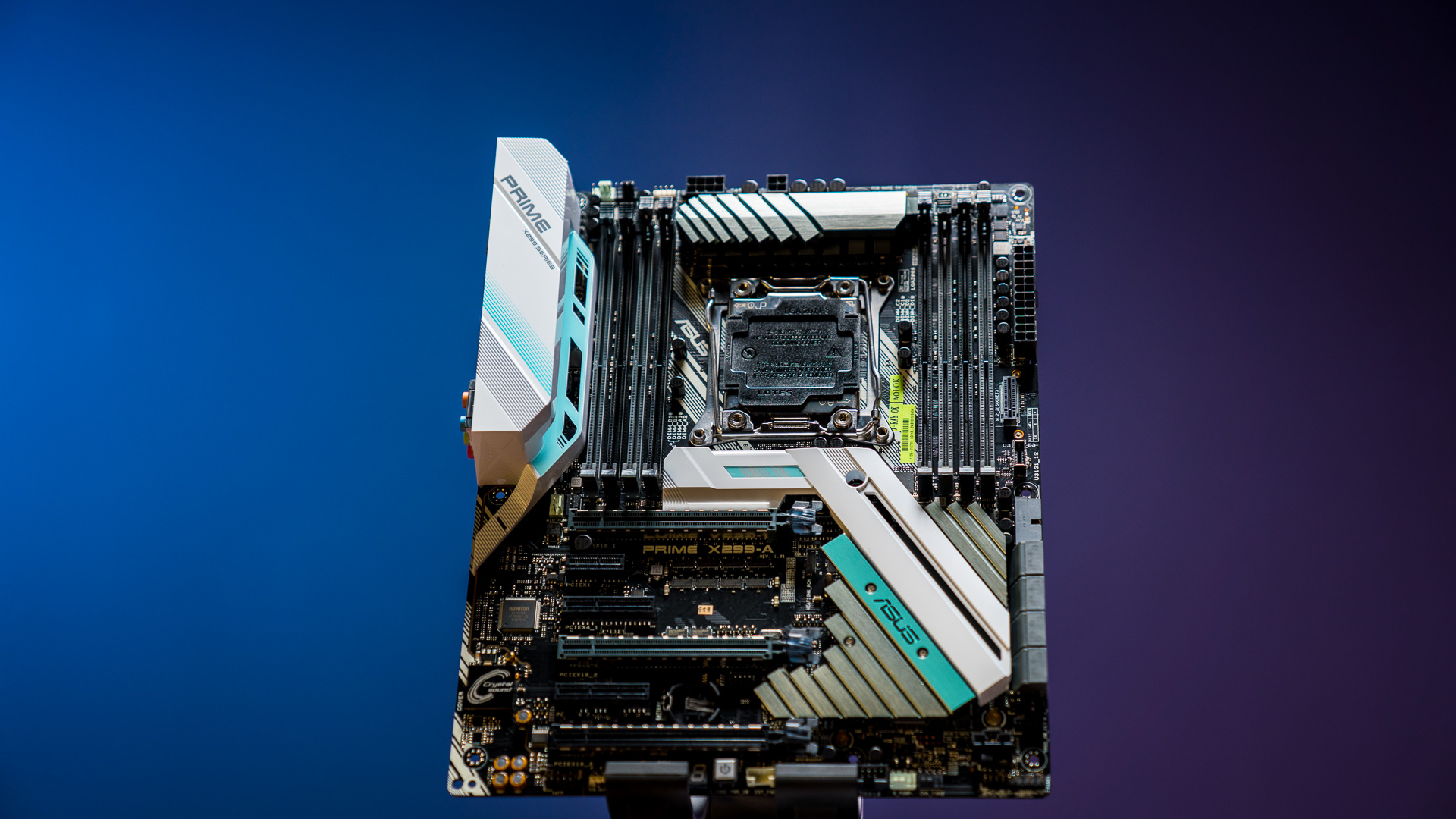 MSI uses a machined metal dual heatsink/chipset design on their top X299 M7 board. It’s a pretty cool design, though the downside is that you must remove all graphics cards and detach the SSDs from the thermal pads in order to add/remove anything in the M.2 slots. Unfortunately, MSI sticks with their stamped metal shields for the Carbon Pro and below.
MSI uses a machined metal dual heatsink/chipset design on their top X299 M7 board. It’s a pretty cool design, though the downside is that you must remove all graphics cards and detach the SSDs from the thermal pads in order to add/remove anything in the M.2 slots. Unfortunately, MSI sticks with their stamped metal shields for the Carbon Pro and below.
EVGA and ASRock leave their slots naked for your own heatsink if you so dare.
Interestingly, both the ASUS TUF Mark 1 and EVGA Dark have active fans cooling their M.2 slots — one m.2 on the EVGA and dual fan cooled on the ASUS.
Finally, let’s talk placement. You know the worst place to put an M.2 SSD that runs hot? Under a graphics card that’s blowing the wrath of hell all day long. You’ll get throttling immediately.
Now, with Z270, the mobo manufacturers moved the main M.2 SSD slot above the first 16x PCIe slot. That made sense — the GPU wasn’t covering the SSD.
Now, because the X299 chipset demands upwards of 44 PCIe lanes with the connection options that match, the mobo manufacturers are putting the main GPU slot into first position rather than second position (there’s no 1X slot above the 16x slot like Z270).
This means those M.2 slots are being dropped down the board to sit under the GPU. And that’s bad.
ASUS, however, said no bueno and is not putting an M.2 slot in that death valley. Instead, ASUS’s only options are at the bottom of the motherboard connected to the chipset or their vertical M.2 slot along the right edge.
That said, ASRock, always being different, has actually implemented a triple M.2 design with the top slot above the GPU. How? By moving the RAM slots higher. Yup. It’s not clear if there’s any real sacrifice with their northern journey, but it means ASRock as the best M.2 layout available.
Aorus mixes the ASUS and ASRock designs for possibly the best set of options. While they didn’t move the RAM slots higher, the first M.2 slot is right next to the CPU. Second is under the GPU and the third is connected to the chipset.
Of course, Aorus and ASRock are advertising their triple RAID M.2 abilities, which, for some, could be really impressive.
MOST RELIABLE X299 MOTHERBOARD
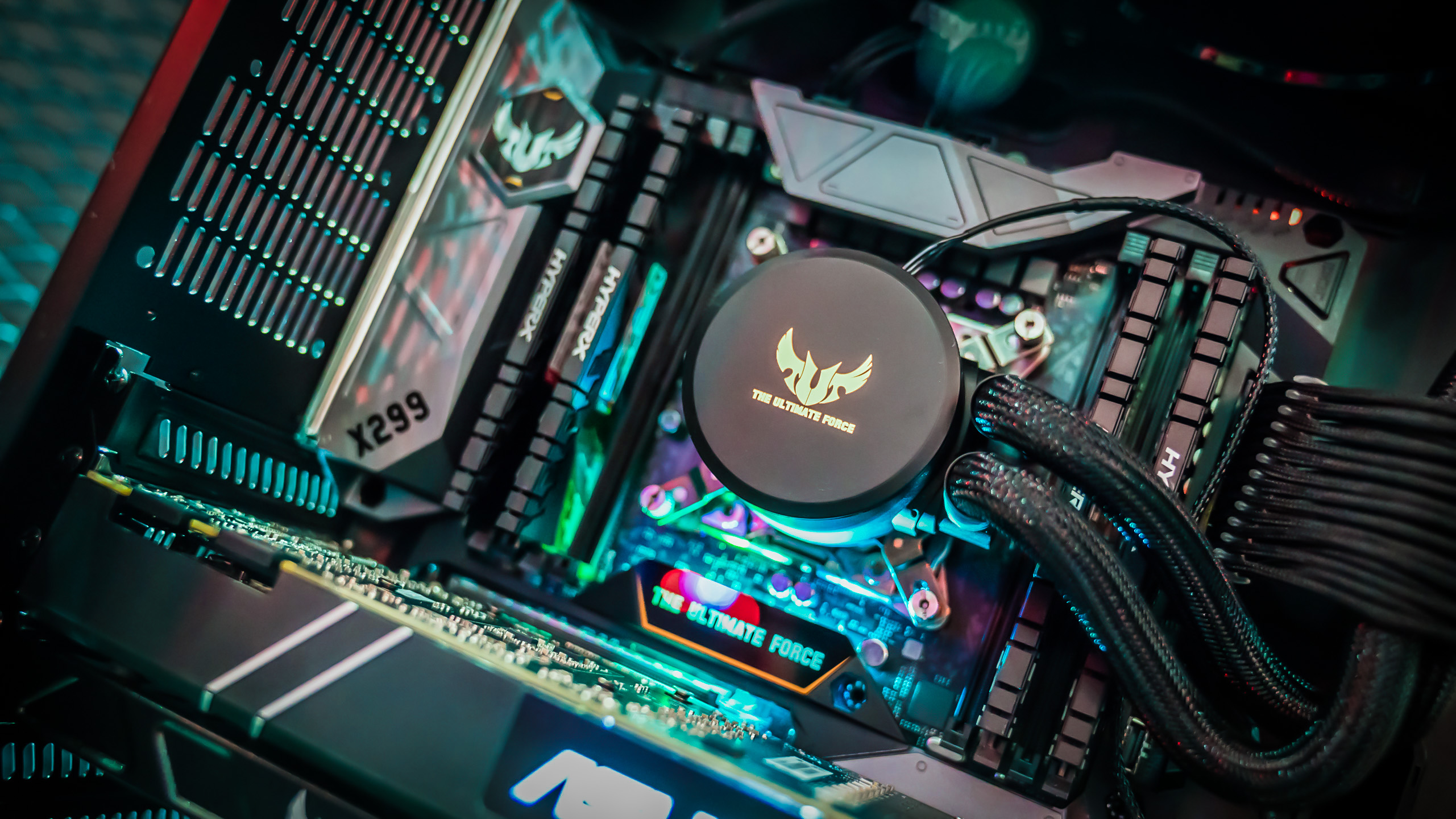 Of course, no long-term reliability tests are available, so this is all speculation. ASUS is marketing their TUF lineup of boards with 5 year warranties rather than the typical 3 year. Fans of TUF are vocal about reliability and all those extra hardware feature to keep the static or other electrical nasties from killing the board. TUF, like Z270, features a top Mark 1 with “thermal armor” and integrated fans at $339 while the budget Mark 2 dials back the futures to hit a $259 price point.
Of course, no long-term reliability tests are available, so this is all speculation. ASUS is marketing their TUF lineup of boards with 5 year warranties rather than the typical 3 year. Fans of TUF are vocal about reliability and all those extra hardware feature to keep the static or other electrical nasties from killing the board. TUF, like Z270, features a top Mark 1 with “thermal armor” and integrated fans at $339 while the budget Mark 2 dials back the futures to hit a $259 price point.
GIGABYTE has Ultra Durable and Workstation boards in the wings, though details are scarce. And the other vendors are focusing on gaming over long term reliability.
BEST X299 MOTHERBOARD FOR STREAMING
If you’re a “professional” streamer, the motherboard is less important as the cores — this is one area where eight or more cores really helps gaming and encoding outbound streams vastly easier.
On the motherboard side, dual LAN ethernet is supported by most everyone at this high price point. ASRock is offering built in Aquatina 10Gb/s ethernet, though this will be more attractive to professionals than streamers.
BEST MINI X299 BOARDS
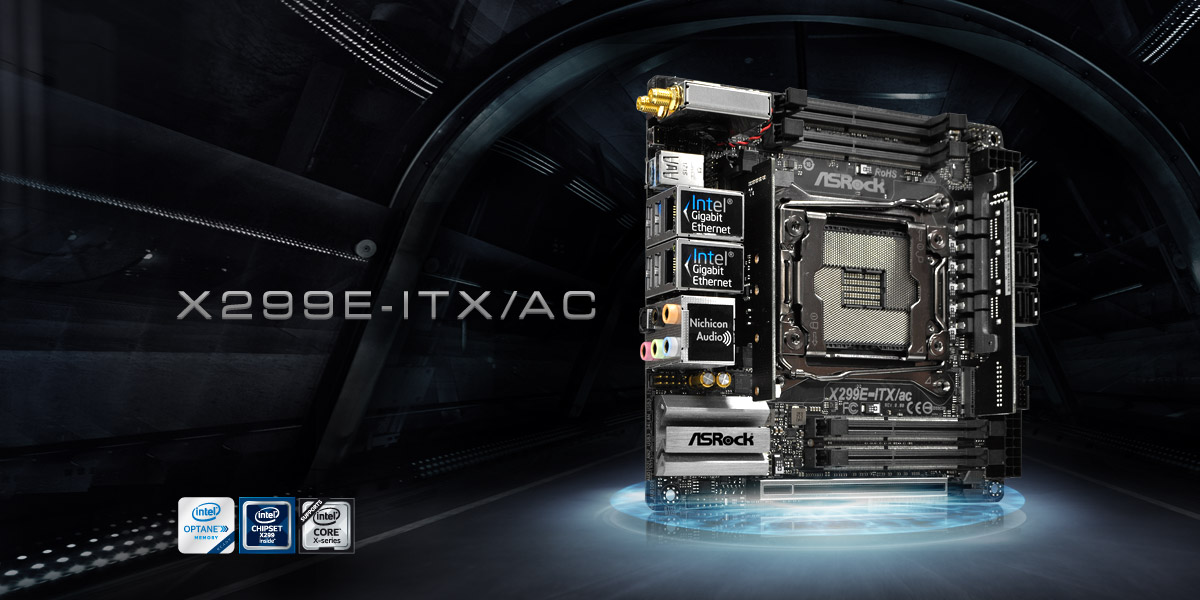 There’s no way a mini ITX board could hold a monster 18 core CPU, right?? Wrong.
There’s no way a mini ITX board could hold a monster 18 core CPU, right?? Wrong.
The mad geniuses at ASRock, following up on the X99 ITX, have shown off an X299 ITX board with just about everything imaginable: four RAM slots (but laptop SO-DIMM size), double gigabit LAN, dual AC wifi and TRIPLE M.2 slots. What the living hell? Yes, it’s all on here — some on the front, some on the back — but this will surely make my SFF friends happy.
As for other sizes, EVGA has a mATX board with many of the features of the FTW, but only four rather than eight RAM slots and single M.2 slot.
BEST WIFI
There is actual news here: ASUS Prime X299 Deluxe has WiGig aka 802.11AD (vs AC) aka super fast SHORT RANGE communication. Wireless VR headsets? WiGig. Other things in a few meters? WiGig. So as long as you’re within a short range, you can hit 2Gbps. That’s 2 vs the traditional 1Gbps of wired ethernet. Nice.
But it’s only over short distances, otherwise normal AC is the preferred choice, which the ASUS board also includes. Yeah, WiGig aka AD is really new, only a handful of routers and laptops support it. But it’s here! Sorta.
As for other new tech, the Aorus Gaming 7 and 9 include the new Killer AC for dual band transfers up to 867Mbps. That’s double your typical speeds. MSI X299 M7 ACK (which stands for AC-Killer) has the same module.
BEST THUNDERBOLT 3
ASUS wins because ASUS Deluxe comes with a Thunderbolt 3 card. That’s the only one. Other ASUS boards can use the $79 card, but you need to purchase separately.
Previously, Aorus/GIGABYTE offered a software upgrade to Thunderbolt 3 from USB-C once the boards were validated by Intel. Will they do the same this time around? Unknown.
WHITE/SILVER X299 MOTHERBOARDS
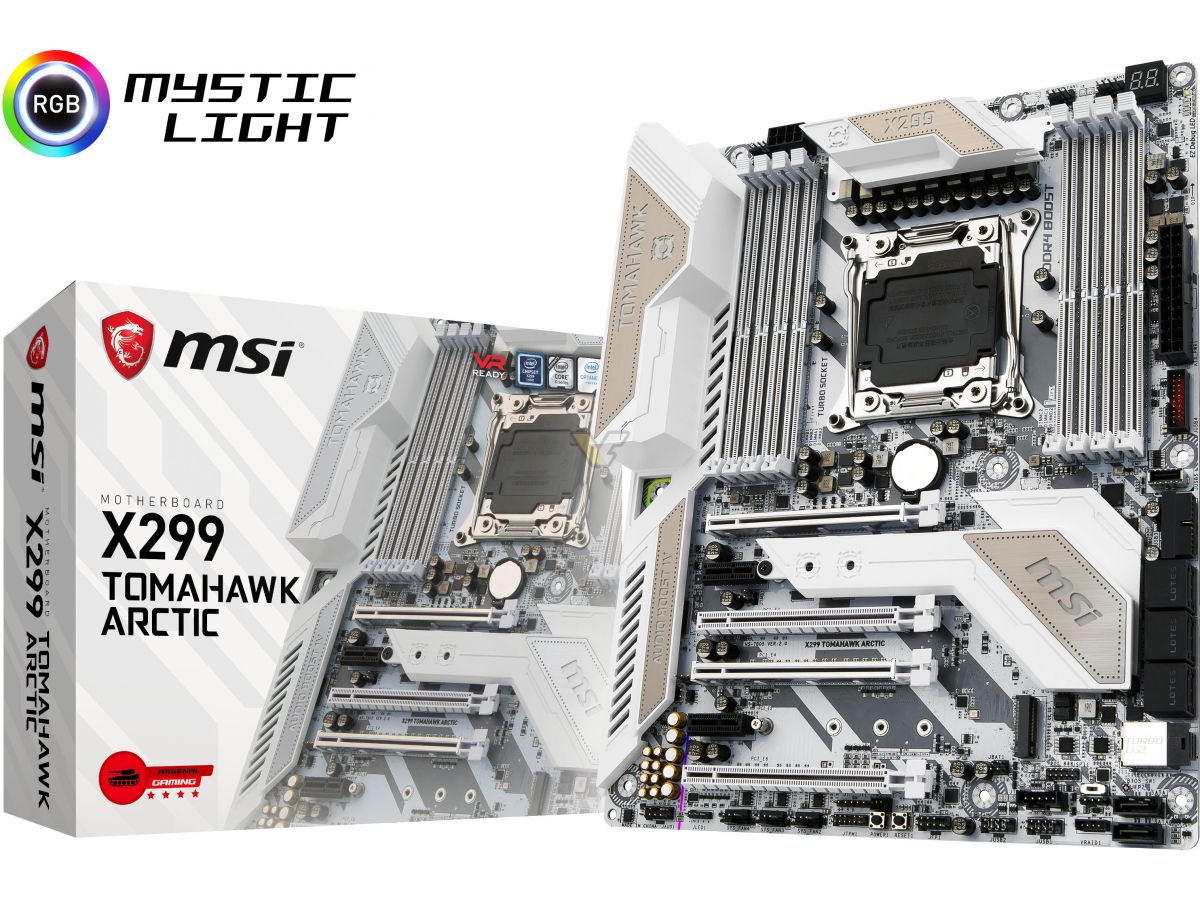 White mobos are as rare as they are popular. That means sorta popular. I’m a huge fan of funky colored PCBs and white boards have a hard core niche following.
White mobos are as rare as they are popular. That means sorta popular. I’m a huge fan of funky colored PCBs and white boards have a hard core niche following.
For X299, MSI has the Tomahawk Arctic, their follow up to previous arctic boards. MSI has gone with a faux stitching this time around. I believe the brown tint is deceiving — this board is all black and white. MSI is also known for their Titanium series with a full titanium spray tan, which is easily one of the better looking boards on the market.
ASUS’s Prime X299-A and Deluxe both feature white shrouds and accents, though they’re a far cry from the Z170 Sabretooth S White with its all-white PCB. You know how cheap it is to make a pure white PCB? Not at all, which is why we haven’t seen a pure white PCB since the Sabretooth. Personally, I think a white Strix would be a slam dunk.
Aorus, has gone with an all black theme for X299, ditching the white on black look of the Z270 boards. That said, GIGABYTE’s silver Designare Z270 is beautiful so hopefully we’ll see a silver Aorus for X299.
OVERALL
That concludes our X299 motherboard roundup. With dozens of models available, the X-Series launch is surprisingly large and impressive for an enthusiast lineup. If you have questions, ask below, we’ll try our best to answer. And if we don’t know, we’ll rustle up some answers on the motherboard mile in Los Angeles, home to Newegg, ASUS, GIGABYTE, MSI, ASRock and the rest of the gang.


